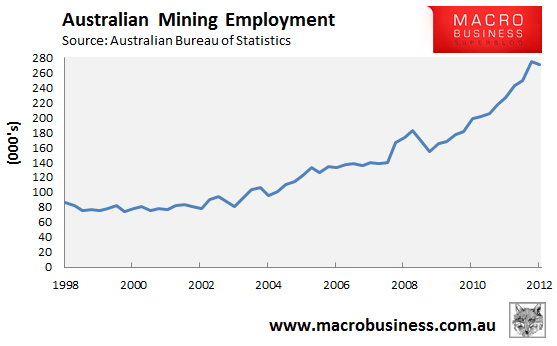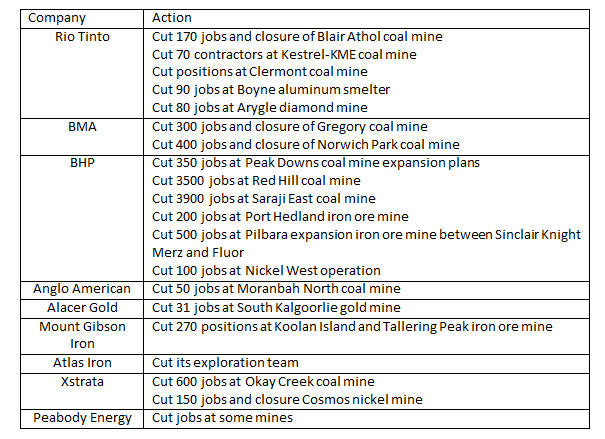
Back in September, the Australian Bureau of Statistics (ABS) released its quarterly employment report, which provided quarterly time-series data on the number of jobs by industry up to the August quarter of 2012. This report showed that the mining sector had lost -4,600 jobs in the three months to August, which was the first time that the industry had experienced job losses since May 2009, in the wake of the Global Financial Crisis (GFC):

Since August, the employment outlook facing the mining industry appears to have worsened. Monday’s ANZ job ads release for November noted that job ads had shrunk significantly in the mining industry:
The trend in job advertising has continued to deteriorate. The weakness in job advertisements across the mining states of Western Australia and Queensland has been particularly concerning and reflects a much slower pace of mining-related hiring over the past six months. Over this period, job advertisements in Western Australia have fallen, on average by 6% each month and in Queensland the average monthly decline has been around 4%. The decline in newspaper job advertisements in Western Australia has been particularly sharp over the last three months, falling a total of 22%.
And new research by R2Mining and CostMine claims that the mining industry has laid-off nearly 10,000 miners over the last couple of months. From Mining.com:
Australian miners have reduced overhead by $2 billion and laid off nearly 10,000 miners over the last couple of months, according to a report by R2Mining and CostMine.
“The majority of the Australian mining industry has found that it is no longer profitable to invest in the current economical climate,” writes the report authors, Shahriar Shafiee and Nick Abbate.
The main factors threatening the Australian mining industry are the fall in mineral commodity prices over the last 12 months, the uncertainties created around the mining and carbon taxes, an increasing royalty rate, a strong Australian dollar, and slowing of China’s economic growth.
Therefore with the no improvement in commodity prices expected in the short-term, Australian mining companies have to reduce overhead and operating costs as well as non-essential expenditures in order to keep mining project assets in positive value.
The below table from the report provides details of the mining lay-offs:
Twitter: Leith van Onselen. Leith is the Chief Economist of Macro Investor, Australia’s independent investment newsletter covering trades, stocks, property and yield. Click for a free 21 day trial.


